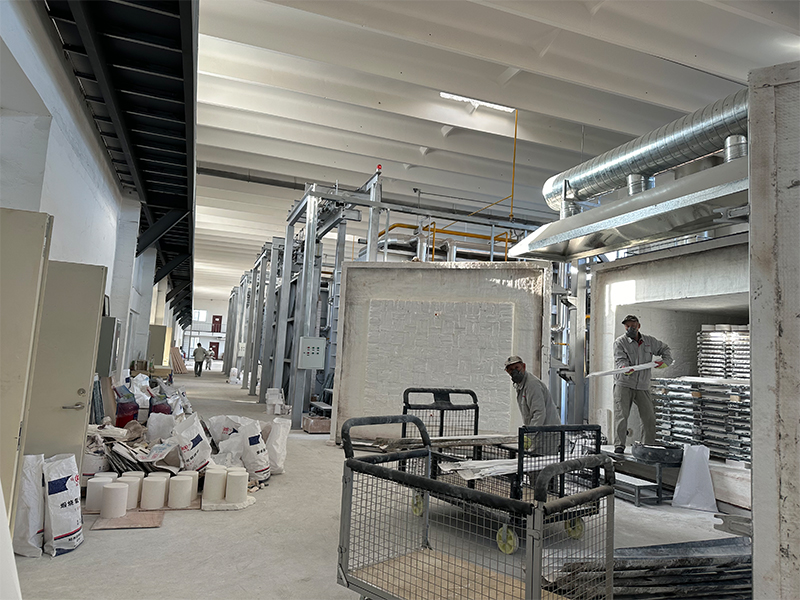As one of the most widely used advanced ceramic materials in the industrial field, the performance optimization of alumina ceramics has always been a core topic in scientific research and industry. Recently, multiple studies have focused on the influence of sintering temperature on the properties of alumina ceramics, among which sintering at 1800°C has been confirmed to be a "double-edged sword" – it can significantly improve the densification and thermal properties of the material, but may also lead to a decline in mechanical properties due to excessive grain growth. This paper will deeply analyze the advantages and disadvantages of this high-temperature sintering process in combination with the latest research results.
Ⅰ. Positive Effects of 1800°C Sintering: Densification and Enhancement of Functional Properties
1.The Leap in Densification and Thermal Conductivity
Experimental data shows that when the sintering temperature increases from 1600°C to 1800°C, the densification of high-purity alumina ceramics rises from 99.3% to 99.7%, approaching the theoretical density. Concurrently, thermal conductivity increases, benefiting from the reduction in porosity and optimization of grain boundary structures. This characteristic makes it an ideal material for semiconductor heat dissipation modules and high-power electronic devices, effectively addressing thermal management challenges in high-temperature environments.
2.Enhancement of Electrical Properties
The alumina ceramics sintered at 1800°C achieve peak values in dielectric constant (10.7 @1MHz) and dielectric strength (60.3 kV/mm), with a volume resistivity as high as 2.90×10¹⁷ Ω·cm, meeting the requirements for high-frequency insulating materials. Studies have shown that the improvement in densification reduces the risk of pore discharge, thereby enhancing the dielectric strength.
3.High-Temperature Stability and Corrosion Resistance
The ceramics sintered at this temperature feature complete grain development and a stable hexagonal lattice structure, endowing the material with excellent high-temperature resistance and acid-alkali corrosion resistance. They are suitable for applications in radiation environments of nuclear power plants and linings of chemical reactors.
Ⅱ. Challenges of 1800°C Sintering: The Critical Point of Mechanical Properties
Despite the numerous advantages brought by high-temperature sintering, its side effects cannot be ignored:
Grain Coarsening and Strength Decline: When the temperature exceeds 1650°C, the grain size rapidly increases from 4.5 μm (1650°C) to 12.5 μm (1800°C), causing the flexural strength to drop sharply from 488.9 MPa to 420 MPa. The accelerated grain boundary migration rate is the main cause, with some pores being encapsulated within the grains, forming micro-defects.
Increased Dielectric Loss: The loss tangent value (5.4×10⁻⁴) of the sample sintered at 1800°C is much higher than that of low-temperature samples, possibly related to the generation of oxygen vacancy defects under reducing atmosphere.
Ⅲ. Technical Breakthroughs: How to Balance the Advantages and Disadvantages of 1800°C Sintering?
To overcome the limitations of high-temperature sintering, researchers have proposed the following solutions:
1. Optimization of Sintering Aids: Adding aids such as MgO and TiO₂ can reduce the sintering activation energy and inhibit abnormal grain growth at 1800°C. For example, the grain size of high-purity alumina ceramics doped with MgO can be controlled within 10 μm.
2. Two-Step Sintering Method:First, rapid densification at a high temperature (e.g., 1750°C), followed by long-term holding at a low temperature (e.g., 1500°C), balances densification and fine-grained structure.
3. Advanced Sintering Processes:Adopting Spark Plasma Sintering (SPS) or microwave sintering can reduce the temperature requirement by 200–300°C, avoiding defects of traditional high-temperature sintering.
Ⅳ. Application Prospects: The Leap from Laboratory to Industrialization
At present, high-purity alumina ceramics sintered at 1800°C have been applied in:
Energy transmission windows for electrovacuum devices:Replacing traditional 95% alumina ceramics to enhance the reliability of high-frequency and high-power devices.
Semiconductor manufacturing:Serving as integrated circuit substrates, their high thermal conductivity and insulation properties ensure chip stability.
New energy field:Used in solid-state battery separators and photovoltaic inverter components to extend equipment lifespan.
Conclusion
The 1800°C sintering process represents a critical step in enhancing the performance of alumina ceramics, but its parameter optimization requires comprehensive consideration of material purity, additive formulations, and sintering technologies. In the future, with advancements in low-temperature sintering techniques and nano-powder preparation processes, alumina ceramics are expected to replace metallic and polymeric materials in broader applications, driving the upgrading of high-end manufacturing industries.


